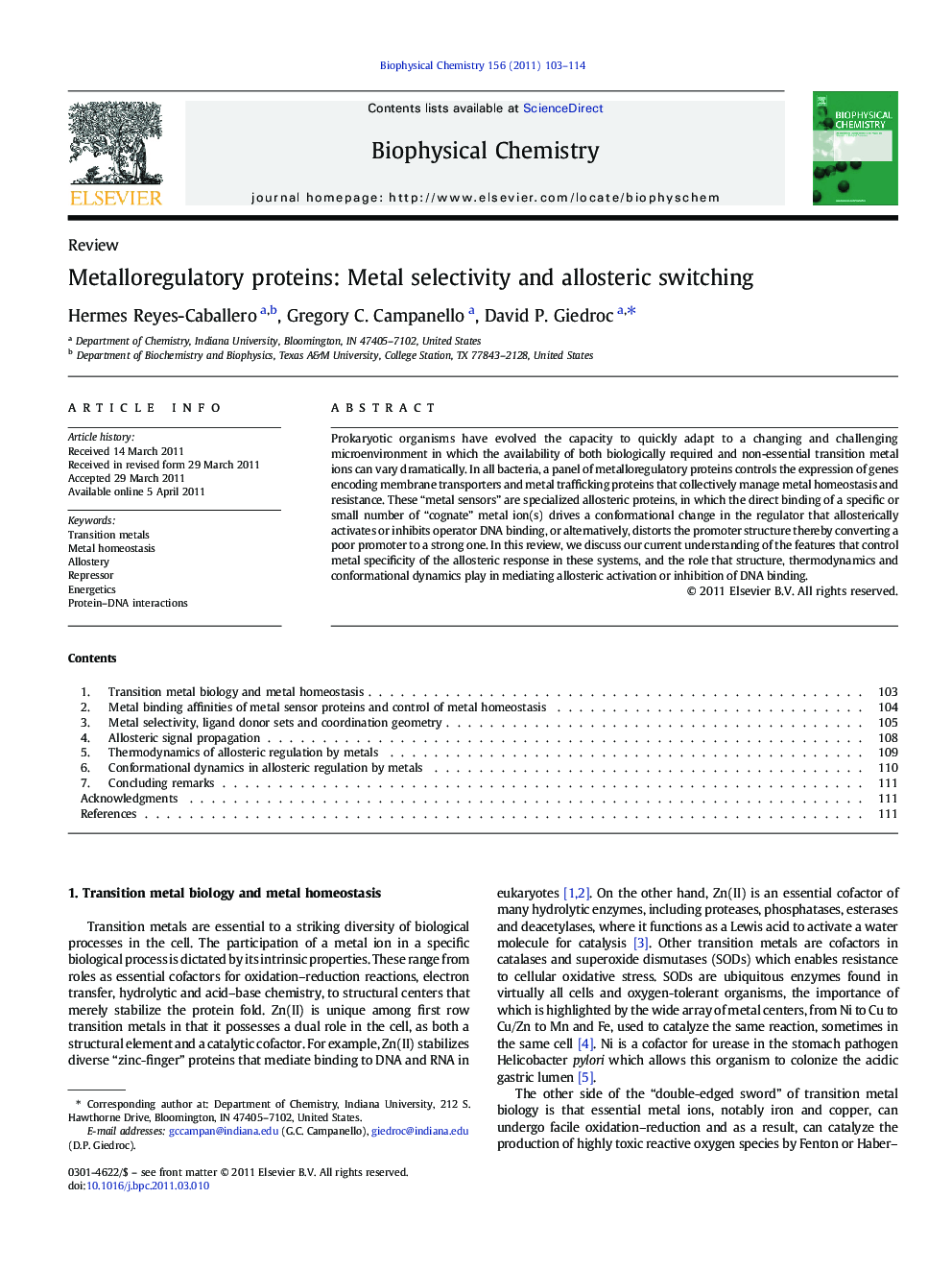| Article ID | Journal | Published Year | Pages | File Type |
|---|---|---|---|---|
| 5371446 | Biophysical Chemistry | 2011 | 12 Pages |
Prokaryotic organisms have evolved the capacity to quickly adapt to a changing and challenging microenvironment in which the availability of both biologically required and non-essential transition metal ions can vary dramatically. In all bacteria, a panel of metalloregulatory proteins controls the expression of genes encoding membrane transporters and metal trafficking proteins that collectively manage metal homeostasis and resistance. These “metal sensors” are specialized allosteric proteins, in which the direct binding of a specific or small number of “cognate” metal ion(s) drives a conformational change in the regulator that allosterically activates or inhibits operator DNA binding, or alternatively, distorts the promoter structure thereby converting a poor promoter to a strong one. In this review, we discuss our current understanding of the features that control metal specificity of the allosteric response in these systems, and the role that structure, thermodynamics and conformational dynamics play in mediating allosteric activation or inhibition of DNA binding.
Graphical abstractDownload full-size imageResearch Highlights⺠Metalloregualtory proteins bind metal ions and control the expression of genes. ⺠These genes encode proteins that govern cellular metal homeostasis and resistance. ⺠Direct binding of metals allosterically activates or inhibits DNA operator binding. ⺠Metal specificity is dictated by the first metal coordination shell. ⺠The underpinnings of allostery reveals general trends in biological regulation.
